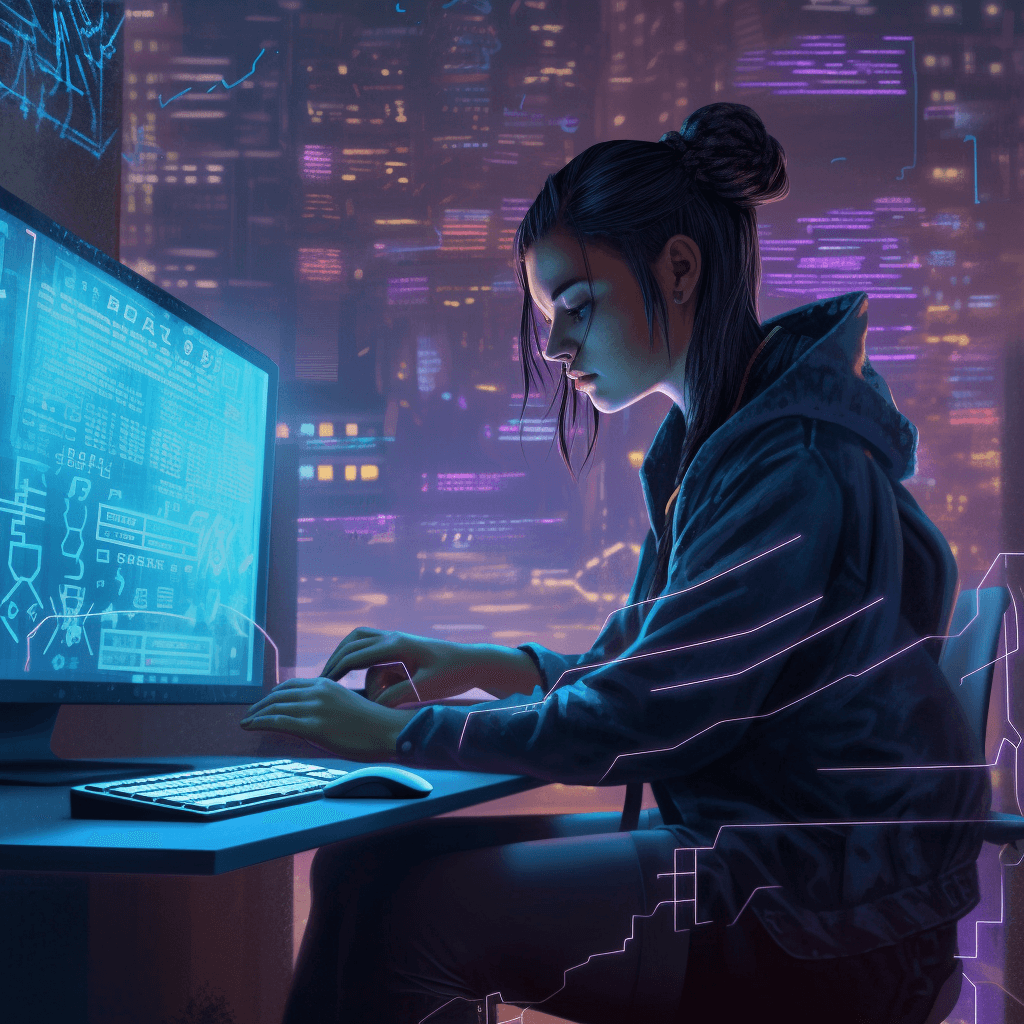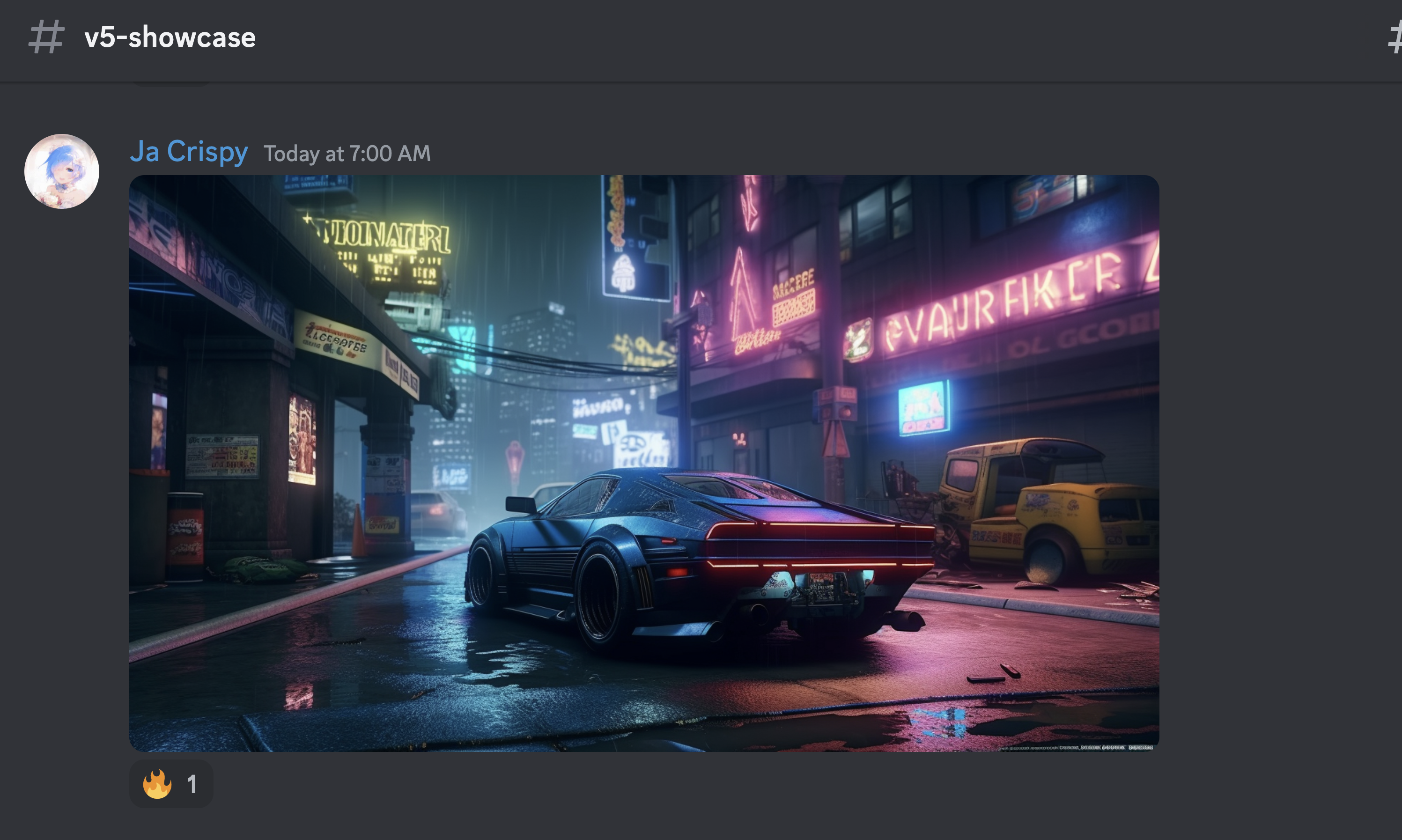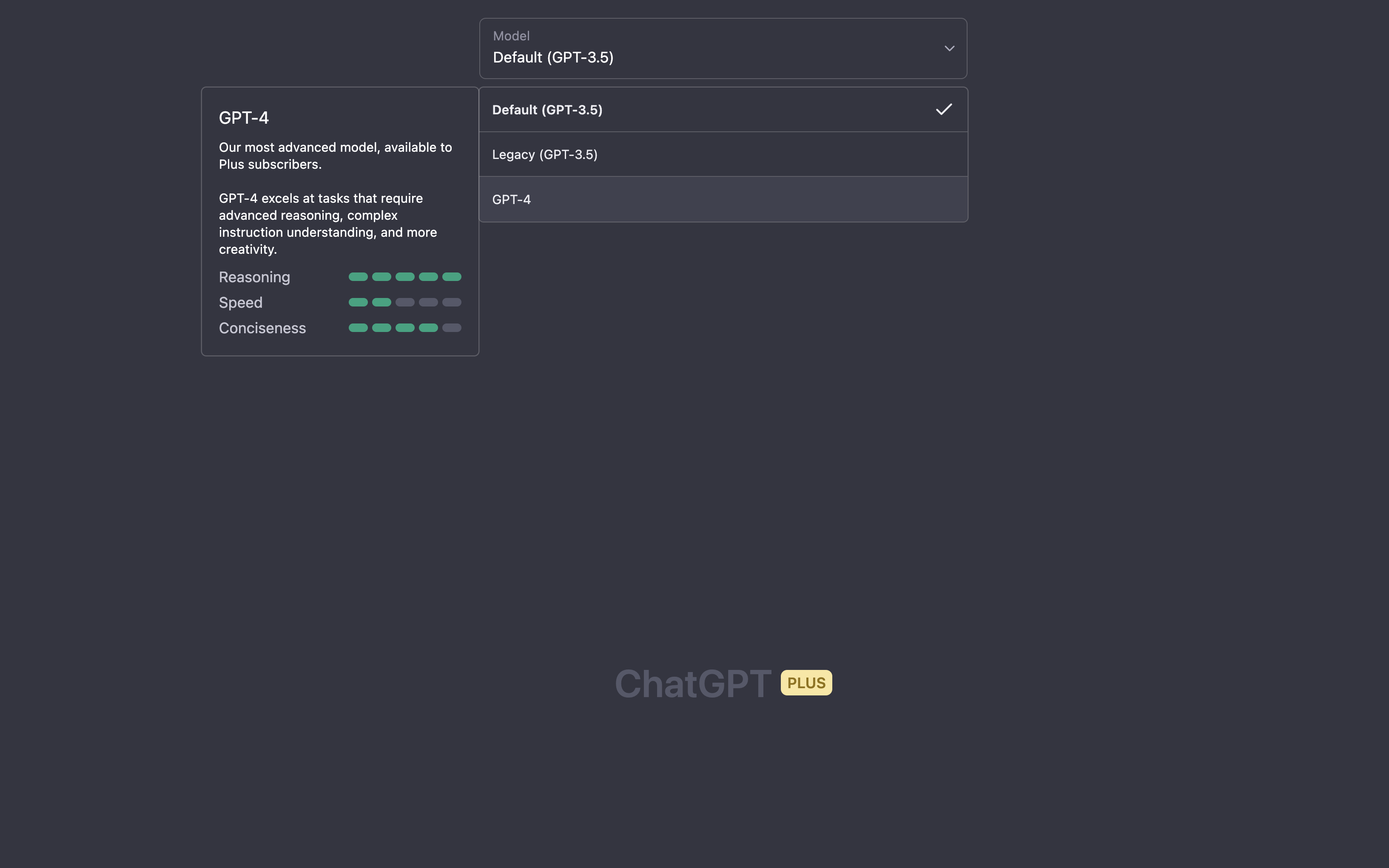
I'm not sure if at this stage we can accurately determine the impact of GPT-4 and similar tools on our daily lives. However, looking at the extraordinary images generated, such as Midjourney in version 5, and the sound quality generated by ElevenLabs based solely on a few seconds of a sample, it seems that we are dealing with something big. If we add to this the unprecedented pace of AI tool development, we only get confirmation that it is difficult to predict how our daily lives might change. I don't know if you know, but ChatGPT reached its first million users in just 5 days from the start. After 2 months, we were already talking about a number of 100,000,000.
The image you see below was created in less than a minute, based on a few words of my description. A few words, with the help of GPT-4, were turned into this description, and then into an image:
The girl sits in front of the 32" screen, illuminated by the neon glow of the cyberpunk cityscape outside. Her fingers fly across the keyboard as she types away in the text editor, the words appearing on the screen in a flurry of code. She is creating something new, something that will revolutionize the world.

Now you can imagine what a person who has devoted hundreds or thousands of hours of their life to learning to draw and operate graphic programs might feel. One might think that the career of someone like this is coming to an end, and like many other professions, will soon become a thing of the past. On the other hand, you can look at it differently and combine your skills with the possibilities offered by AI tools and create works like this:

I can easily imagine how games and movies will soon look, with elements created by artificial intelligence and the tone set by humans. What I'm talking about now, in the context of my work as an animator, is perfectly illustrated by Aaron Blaise from Disney. Looking at it this way, it seems obvious that the best strategy we can adopt now, in the context of our professional work, is also the answer to the question: How can I combine my unique qualities with what AI offers?
This e-book is about that.
Together with Jakub "unknow" Mrugalski, we will guide you step by step through everything you need to know to start using GPT-4 in a very unusual way without any programming knowledge. Instead of just asking questions and expecting the perfect answer, I'll show you how you can very precisely indicate what you need. In addition to ready-made solutions, I will share with you the principles that will take your work to a completely different level. Ultimately, just like me above, we will make GPT-4 generate commands independently and then execute them for us.
You don't have to code, but basic knowledge of Shortcuts, Airtable, or Make.com can be very useful. However, it's not essential to get the most out of this e-book that we have prepared for you.
I assume that you haven't missed the posts on social media, showcasing sometimes impressive, but very basic conversations on ChatGPT — answering questions, generating text, or writing more or less advanced code. In practice, it turns out that this is just the beginning of the possibilities. What's more, our focus won't be on ChatGPT at all, but directly on GPT-4, which we will connect to using macros and scenarios developed by me, and I will guide you through it step by step.
I don't want to purposely explain the details of how GPT-4 works, and I don't even see the need for it. Just imagine GPT-4 as someone very intelligent who learns quickly and has a large but limited access to knowledge. Moreover, it knows nothing about you and only a little about what you do. This means that you can't treat GPT-4 as an oracle or someone who will do all the work for you. At the same time, GPT-4's excellent memory and high intelligence can make it a perfect assistant for you.
I must warn you, though — GPT-4 sometimes lies or, to refer a bit more to how it works: it doesn't always guess correctly. And although this phenomenon occurs in GPT-4 much less frequently than in earlier versions, we still have to deal with it. For this reason, always verify the information you receive, especially in situations where precision is crucial. In practice, it's enough to approach the generated answers with some distance.
However, know that the effectiveness of "guessing" GPT-4 depends largely on the description of the task and the context provided (e.g., information you want to work on, containing details and instructions, helpful in performing the task).
To make it easier for you, we will present you with the best techniques based on the recommendations of OpenAI, the creators of GPT-4, as well as the experiments of other people and our own experiences.
As I write these words, it has only been a few days since the premiere of GPT-4. Access to this version of the model is available to ChatGPT Plus users, and API access is exclusively for invited individuals. This situation may change in the near future. In the meantime, I encourage you to purchase the paid version of ChatGPT and make sure that when starting a conversation, you choose the appropriate model.:

Translating this into practice, we're talking about: